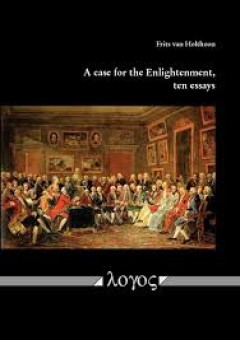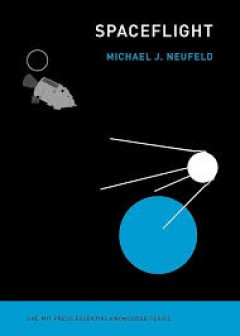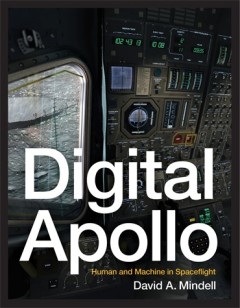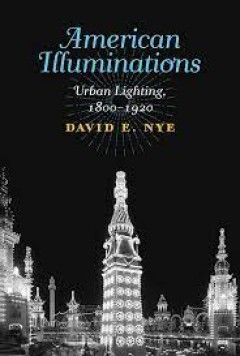Filter by

A Case for the Enlightenment, Ten Essays
The message of these essays is that the Enlightenment should not be regarded as a revolutionary programme for the future. The philosophers of the Enlightenment hoped to educate individuals in the light of modern science according to Kant's adage: Aude sapere and did not want to change the structure of society. F.L.van Holthoon is emeritus professor of social history in the University of Groni…
- Edition
- -
- ISBN/ISSN
- 9783832592080
- Collation
- 204 hlm
- Series Title
- -
- Call Number
- -

A World of Disorderly Notions
"From Jonathan Swift to Washington Irving, those looking to propose and justify exceptions to social and political norms turned to Cervantes’s notoriously mad comic hero as a model. A World of Disorderly Notions examines the literary and political effects of Don Quixote, arguing that what makes this iconic character so influential across oceans and cultures is not his madness but his logic. A…
- Edition
- -
- ISBN/ISSN
- 9780813942162
- Collation
- oer.unej.ac.id
- Series Title
- -
- Call Number
- -

Enlightened Religion
The history of the relation between religion and Enlightenment has been virtually rewritten In recent decades. The idea of a fairly unidirectional ‘rise of paganism’, or ‘secularisation’, has been replaced by a much more variegated panorama of interlocking changes—not least in the nature of both religion and rationalism. This volume explores developments in various cultural fields—f…
- Edition
- -
- ISBN/ISSN
- 978-90-04-38939-7
- Collation
- oer.unej.ac.id
- Series Title
- Brill's Studies in Intellectual History, Volume: 297
- Call Number
- -

The Search for Ultralight Bosonic Dark Matter
To set the stage for our study of ultralight bosonic dark matter (UBDM), we review the evidence for the existence of dark matter: galactic and stellar dynamics, gravitational lensing studies, measurements of the cosmic microwave background radiation (CMB), surveys of the large-scale structure of the universe, and the observed abundance of light elements. This diverse array of observational …
- Edition
- -
- ISBN/ISSN
- 9783030958527
- Collation
- XX, 363
- Series Title
- -
- Call Number
- -

Spaceflight :a concise history
A concise history of spaceflight, from military rocketry through Sputnik, Apollo, robots in space, space culture, and human spaceflight today. Spaceflight is one of the greatest human achievements of the twentieth century. The Soviets launched Sputnik, the first satellite, in 1957; less than twelve years later, the American Apollo astronauts landed on the Moon. In this volume of the MIT Press E…
- Edition
- -
- ISBN/ISSN
- 9780262350457
- Collation
- 1 online resource.
- Series Title
- -
- Call Number
- -

Digital Apollo : Human and Machine in Spaceflight
How human pilots and automated systems worked together to achieve the ultimate in flight--the lunar landings of NASA's Apollo program.As Apollo 11's Lunar Module descended toward the moon under automatic control, a program alarm in the guidance computer's software nearly caused a mission abort. Neil Armstrong responded by switching off the automatic mode and taking direct control. He stopped mo…
- Edition
- -
- ISBN/ISSN
- -
- Collation
- -
- Series Title
- -
- Call Number
- -

Digital Apollo Digital Apollo: Human and Machine in Spaceflight
How human pilots and automated systems worked together to achieve the ultimate in flight--the lunar landings of NASA's Apollo program.As Apollo 11's Lunar Module descended toward the moon under automatic control, a program alarm in the guidance computer's software nearly caused a mission abort. Neil Armstrong responded by switching off the automatic mode and taking direct control. He stopped mo…
- Edition
- -
- ISBN/ISSN
- -
- Collation
- 1 online resource (xiii, 359 pages) : illustrations
- Series Title
- -
- Call Number
- -

American illuminations :urban lighting, 1800-1920
How Americans adapted European royal illuminations for patriotic celebrations, spectacular expositions, and intensely bright commercial lighting to create the world's most dazzling and glamorous cities.Illuminated ftes and civic celebrations began in Renaissance Italy and spread through the courts of Europe. Their fireworks, torches, lamps, and special effects glorified the monarch, marked the …
- Edition
- -
- ISBN/ISSN
- 9780262344784
- Collation
- 1 online resource (x, 280 pages)
- Series Title
- -
- Call Number
- -

Electric Light: An Architectural History
How electric light created new spaces that transformed the built environment and the perception of modern architecture. In this book, Sandy Isenstadt examines electric light as a form of architecture--as a new, uniquely modern kind of building material. Electric light was more than just a novel way of brightening a room or illuminating a streetscape; it brought with it new ways of perceiving an…
- Edition
- -
- ISBN/ISSN
- 9780262347310
- Collation
- 1 online resource (304 pages).
- Series Title
- -
- Call Number
- -

Being and neonness
A cultural and philosophical history of neon, from Paris in the twentieth century to the perpetually switched-on present day. For most of us, the word neon conjures images of lights, colors, nightlife, and streets. It evokes the poetry of city nights. For Luis de Miranda, neon is a subject of philosophical curiosity. Being and Neonness is a cultural and philosophical history of neon, from early…
- Edition
- Revised and adapted by Luis de Miranda
- ISBN/ISSN
- 9780262353052
- Collation
- 1 online resource (136 pages).
- Series Title
- -
- Call Number
- -
 Computer Science, Information & General Works
Computer Science, Information & General Works  Philosophy & Psychology
Philosophy & Psychology  Religion
Religion  Social Sciences
Social Sciences  Language
Language  Pure Science
Pure Science  Applied Sciences
Applied Sciences  Art & Recreation
Art & Recreation  Literature
Literature  History & Geography
History & Geography